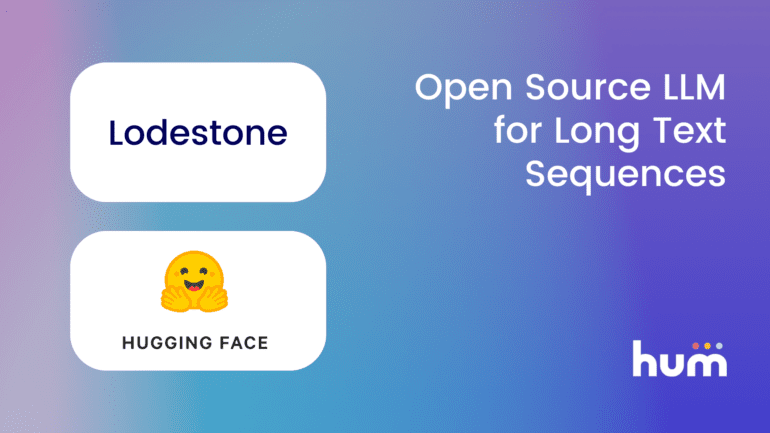TL;DR:
- Hum introduces Lodestone, a cutting-edge large language model (LLM).
- Built upon Google’s BERT architecture with advancements, Lodestone excels in processing lengthy text sequences.
- Lodestone outperforms competitors in size and sequence length on the MTEB Leaderboard.
- It addresses real-time applications’ needs, offering cost-effective solutions for lengthy text analysis.
- Trained on a vast dataset, Lodestone handles sequences of 4096 tokens, capturing nuanced context.
- Features include extensive sequence embedding, improved semantic understanding, and sentence vectorization.
- Lodestone’s open-source release allows developers and enterprises to fine-tune and deploy their models on Hugging Face.
- The model serves media, publishing, and content-driven industries, advancing content intelligence and responsible AI.
Main AI News:
Hum, a preeminent provider of AI and data intelligence solutions for the publishing sector, has made a significant stride with the introduction of their latest groundbreaking large language model (LLM) named Lodestone. This remarkable development marks a notable step in the domain of natural language processing, especially when dealing with extensive textual sequences.
Constructed upon Google’s pioneering BERT architecture, Hum’s Lodestone goes beyond mere emulation, incorporating a multitude of enhancements that have emerged since the inception of BERT. The result is an innovative model optimized for processing elongated text sequences. At present, Lodestone holds the distinct accolade of being the highest-performing model of its dimensions and sequence length on the MTEB Leaderboard. This distinctiveness renders it a compelling choice for real-time applications that involve lengthy textual content, obviating the cost and sluggishness associated with larger models.
Niall Little, Chief Technology Officer at Hum, expressed his enthusiasm, stating, “Our stride into the realm of open source community contributions signifies our commitment to propel natural language processing research. Moreover, Lodestone has the potential to unlock profound insights from content data, a feat that eluded previous models restricted to analyzing mere fragments of textual content.“
The creation of Lodestone entailed meticulous training on an expansive dataset replete with over a million scholarly research articles and publications. This comprehensive grounding has endowed the model with the capability to process text sequences consisting of 4096 tokens, thereby enabling a finer grasp of topical context and nuances in comparison to conventionally employed LLM models.
Key attributes of Lodestone encompass:
- Integration of extensive sequence embedding
- Augmented grasp of semantic nuances
- Conversion of sentences into vectors, facilitating information retrieval, clustering, and gauging sentence similarity
As of today, both developers and corporations can embark on refining and deploying their own customized models utilizing Lodestone, accessible through Hugging Face. This democratization empowers a wider range of projects and businesses to harness the potential of AI applications tailored to elongated sequences.
Niall Little reiterated Hum’s commitment to tackling challenges faced by publishers, societies, and content-centric entities through AI. He remarked, “Lodestone stands as a testament to our dedication in this pursuit. While we continuously fine-tune the model to cater to the unique needs of clients within the media and publishing sectors, we’re equally excited to witness the broader community leveraging Lodestone’s foundation to propel advancements in content intelligence and ethical AI.”
Conclusion:
This launch of Hum’s Lodestone LLM marks a pivotal moment in the text analysis landscape. By blending advanced architecture with superior context comprehension, the model opens avenues for real-time applications and content intelligence. This strategic move not only caters to media and publishing sectors but also spurs broader advancements in the AI market, bridging the gap for businesses seeking efficient processing of extensive textual data.

